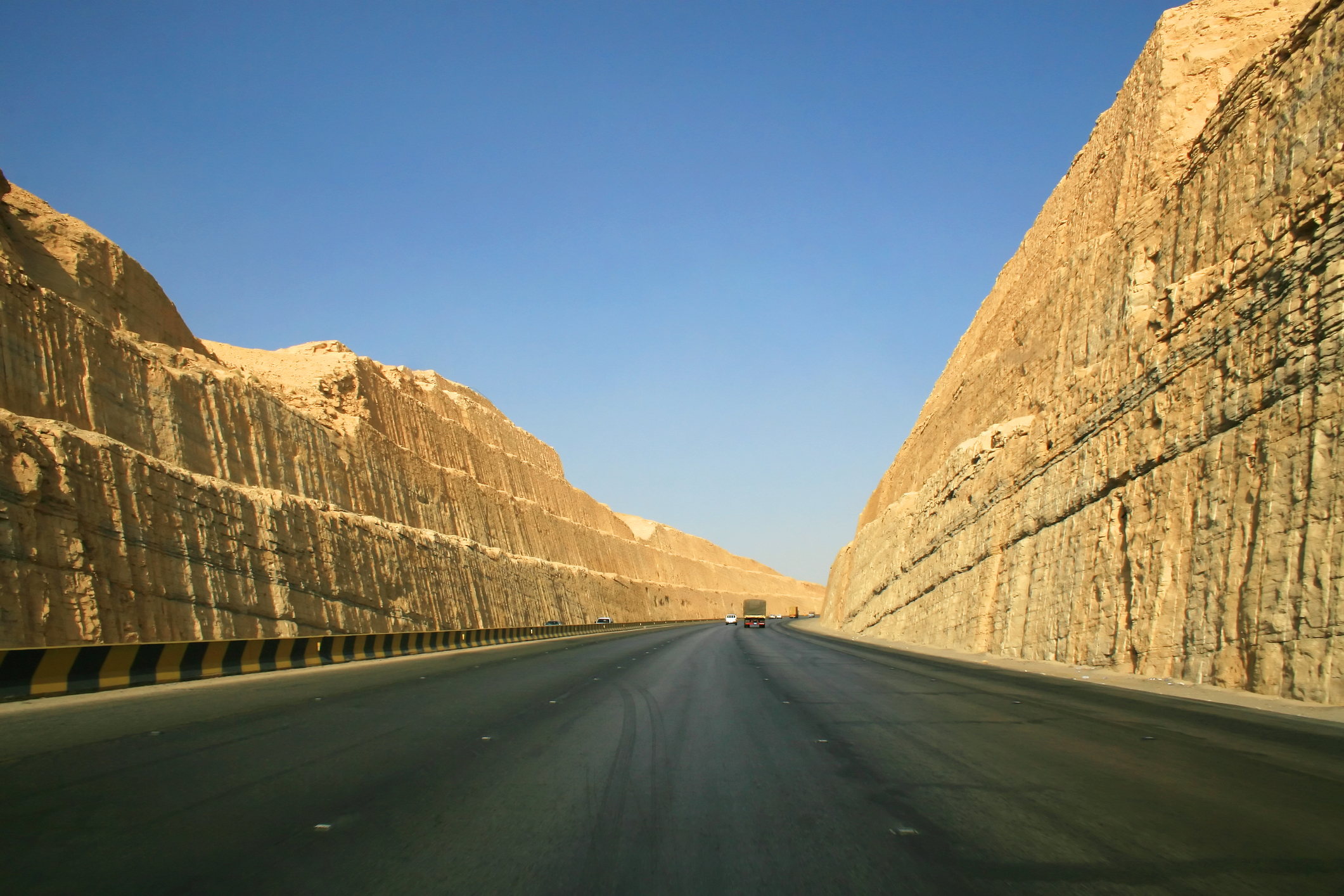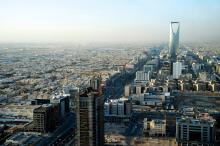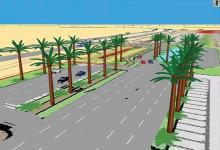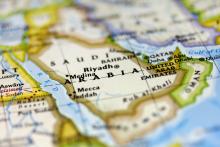
Saudi Arabia is undergoing a series of upgrades to its transport network in a bid to improve Traffic flow rates and boost safety - Mike Woof reports
The massive growth in the use of motor transport worldwide since the start of the 20th century has transformed every country on the planet. But perhaps no country has changed more dramatically than Saudi Arabia, the world’s leading oil producer. At the start of the 20th century Saudi Arabia’s population was small and the country had few industries while it is now heavily industrialised with its enormous oil production slaking the world’s demand for fuel. The country’s population growth curve continues and the Saudi Arabian Government has now set aside huge sums of money to further develop the infrastructure system. Public and private transportation will both benefit from this massive investment programme. The Saudi Arabian Government has allocated a budget of US$266.6 billion to its 2013 budget in order to implement a multimodal transportation system that includes new railways, metros, traffic systems, buses, bridges and roads.However, the climate and terrain in Saudi Arabia provide major challenges to road construction. Temperatures can be ferociously high, particularly in desert areas and this has required a careful selection of road surfacing materials to ensure that there is no deformation, especially under heavy traffic loads. Meanwhile the country’s high mountain ranges pose different problems and in South Western Saudi Arabia these are up to 3,000m high.
But in spite of the challenges, new links have been constructed and even some of the country’s previously inaccessible regions can now be reached by new roads. One key project is for the construction of a $5 billion bridge linking Saudi Arabia and Egypt, although this looks likely to be delayed until the current political situation in the latter country has stabilised.
Capital Riyadh has seen perhaps the most dramatic growth. In less than 100 years the city’s population has grown by a factor of 328. In 1918 Riyadh’s population was just 18,000 compared to a not-inconsiderable 5.9 million today. The infrastructure of Riyadh has grown in stages too, along with the rest of Saudi Arabia. But even so, demand has outstripped capacity and congestion can be severe at peak travel times.
To deal with this issue, the Saudi Ministry of Transport has set out an extensive road construction programme to address both capacity and safety issues and which includes sophisticated traffic management and ITS technologies to improve both traffic flow and safety. Netherlands based
Riyadh’s first ring road, the north-south King Fahd Road and the east–west Makah Road have been the priority projects for improvements, with a focus on boosting safety and providing more on and off ramps. These are being improved through the construction of new tunnels and bridges at a series of intersections, while new traffic corridors will run across the city.
For this four-phase programme, new exit and entry points will be built between service roads and the main carriageways along freeways, while the road designs are being standardised. There is also a move to separate parking areas from the carriageways as well as building new pedestrian ways.
The first of the four infrastructure improvement phases planned for Riyadh is costing US$2.74 billion and is focussing on completing construction of Riyadh’s 2nd and 3rd ring roads, including building 38 tunnels and 15 bridges. Some 100km of existing roads will be improved while 244km of new roads will be built.
Costing a further $2.96 billion, the second phase of Riyadh’s road transport upgrade will see improvements to 199km of existing links and building 71km of new roads. In all work will be completed on 11 major routes while 30 new tunnel and 50 bridges of various sizes will be constructed.
For the $2.74 billion third phase, 58km of new roads will be built while 158km of existing links will be improved. This will see work being finished on 14 major roads as well as the construction of 40 tunnels and 29 bridges.
Largest of all is the fourth phase, which is costing $4.9 billion and requires 118km of new roads as well as improvements to 322km of existing roads. Work is being carried out on 41 major routes while 46 new tunnels and 86 bridges are being constructed.
One of the major portions of work has been the $186 million project to construct a tunnel under the six-lane King Fahd Flyover. This cut and cover work was carried out while the very busy road remained in use, making it very challenging for the firms involved, contractor Saudi Oger and designer Buro Happold. The flyover features 15 spans, constructed in segments using post-tensioning and the design called for the tunnel walls to be built within 100mm of its comparatively shallow foundations.
Buro Happold developed a novel design for the contractor featuring a special load transfer structure alongside the bridge piers. Extensive modelling was required to ensure the movement of the rock would not cause problems for tunnel excavation. The cut and cover tunnel layout was excavated to a depth of 13m, with sections 180-700m long. The tunnel roof sections were precast while the reinforced concrete sections lie on pad foundations.
As part of its plan to improve road safety and reduce journey times, the Ministry of Transport in Saudi Arabia commissioned a construction supervision package for the Riyadh Second Ring Road South East Leg and several roads and junctions in Northern Riyadh. The project includes the construction of main roads, service roads, bridges, street lighting, drainage system, and the relocation of existing utilities. The centrepiece of this package is the Riyadh Second Ring Road South East Leg, which includes three main junctions and five link roads. The package also includes street lighting for the three main roads, the Riyadh - Taef Expressway, the Riyadh - Kharj Expressway and Thumama Road.
The scope of work for this includes overall project management services including project scheduling, contract administration, progress control and reporting, documentation control and technical support. It also covers quality control and quality assurance related to the construction of roads and bridges including signage and marking, intersection signalling, street lighting and storm water drainage. Within this there will also be a review of the programme of works the contractors will use to comply with the contract requirements and major planning standards and techniques. And the supervision package also has to evaluate the contractor’s detailed plan, covering aspects such as equipment mobilisation, material procurement and delivery of drawings. Another aspect will be a review of the contractor’s method statements, personnel deployment schedule and allocation of duties, as well as monitoring of construction progress including the subcontractors and suppliers.
Investment across the Gulf
The Gulf region as a whole is investing heavily in developing its transportation infrastructure, with Saudi Arabia having one of the largest programmes. Transportation is crucial to the country’s economy and integrating the road network within other modes is a crucial task. Saudi Arabia has three international airports located at Jeddah, Damman, and Riyadh. These airports also act as the primary hubs for domestic flights. Meanwhile there are six major seaports in Saudi Arabia. All of these airports and ports need connecting to the road network to ensure passengers can reach their flights and that goods can flow in and out of the country.There is a strong focus on improving major routes within Saudi Arabia. According to the Saudi Ministry of Transport, key inter-city links include the 257km Dammam - Abu Hadriya - Ras Tanura Highway, the 157km Khaybar - Al Ola Highway and the 421km Makkah - Madinah Al Munawarah Highway. They also include the 383km Riyadh - Dammam Highway, the 317km Riyadh - Sedir - al Qasim Highway, the 750km Riyadh - Taif Highway and the 750km Taif - Abha-Gizan Highway.
The Saudi Ministry of Transport launched a number of road design projects around the country in accordance with the 20- year prioritisation program for primary and secondary roads. Studies were commissioned for major primary roads in the Riyadh region. These include the dualling of a 90km stretch of the Riyadh – Khurays - Ehsaa Road as well as improvements to Exit 14 of the Riyadh Eastern Ring Road. They also include construction of the 15km Second Ring Road Link (Sheikh Jaber Road Extension) between Dammam Road and Prince Salman Road and the upgrade of the 11km Sheikh Jaber Road between Makkah Road and Dammam Road.
The scope of work has included the studies, surveys and designs needed for the project tenders. These cover a series of tasks examining the topography, hydrological and hydraulics aspects, geology, traffic and circulation and geotechnical investigations for bridges. The work also looks into route selection, concept, preliminary and detailed designs of 121km of dual roads and 2km of single carriageway roads, as well as the concept, preliminary and detailed designs of 31 grade-separated interchanges.
Looking further ahead the study is investigating designs for 136,000m² of simply supported and 32,000m² continuously-supported bridges featuring solid slab decks, T beam decks, box girder decks, pre-stressed decks and steel beam decks. In addition this portion will include 34,000m² of special bridges using either suspension or cable-stayed designs. Other components include detailed design for the street lighting as well as the drainage and landscaping for 51km of roads and 31 interchanges. And for all of these components a value engineering exercise will be carried out before the detailed design stage can commence.
Saudi Arabia invests in road safety
Statistics show Saudi Arabia to have a serious road safety problem, which the authorities are now addressing with tough enforcement measures coupled with the introduction of sophisticated technology. In 2012 there was an average of 19 road fatalities occurring/day in Saudi Arabia, costing in excess of US$6 billion in all with $250 million/year on medical care alone. The main cause of traffic accidents is from reckless drivers and the General Directorate of Traffic reports that human factors are responsible for about 85% of all car crashes. Around one-third of crashes are due to drivers failing to stop for red lights and 18% due to illegal U-turns, while speeding, sudden stops, the use of cell phones, and aggressive driving account for the rest.
A large portion of the budget will go towards the installation of some of the newest innovations in transportation technology.








